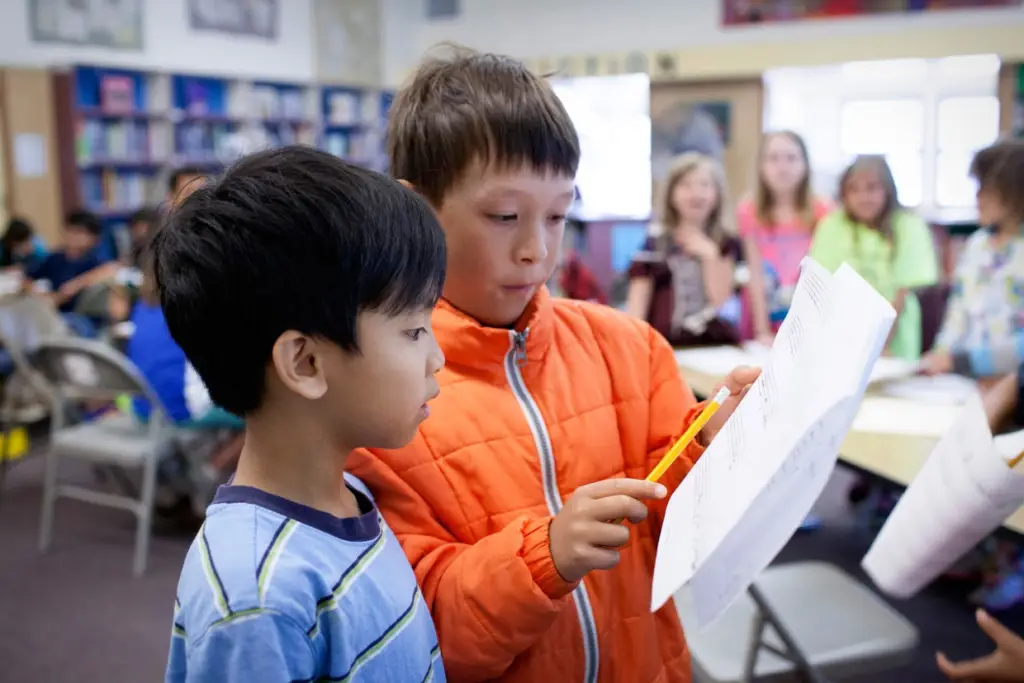This commentary was originally published by EdSource.
Improving literacy instruction is once again in fashion among America’s policy circles. Between 2019 and 2022, state legislatures passed more than 200 bills that sought to push and pull public schools to embrace the “science of reading.”
But one year into closely following a big city school district’s effort to remake literacy instruction as part of a project with the Center on Reinventing Public Education, I can’t help but think these well-intended legislative efforts ignore the larger problem: teachers working alone in their classrooms are ill-positioned on their own to provide the support children most need to learn to read.
CRPE’s report on this project suggests that addressing the literacy crisis requires more than papering over the harms of bad curricula. It means rethinking the traditional teaching model, long a hallmark of public education in the United States, that leaves one adult in charge of supporting 25 or more children who arrive with wildly different levels of preparation and uneven or absent literacy support at home.
Thanks to the work of organizations like The Oakland REACH and the Oakland NAACP, the Oakland Unified School District started quietly overhauling its approach to literacy instruction two years ago. That work involved familiar investments in new curriculum and professional development.
But the real stars of the strategy were early literacy tutors, community members — including parents and grandparents — who were trained and paid to support small groups of students working to develop foundational literacy skills.
Thanks to the investment in early literacy tutors, Oakland schools were able to offer significantly more targeted and differentiated instruction than they would have otherwise. One school we visited used an “all hands on deck” approach that leveraged eight classroom teachers, two tutors, and two non-classroom educators to ensure that every student was getting the targeted literacy instruction they needed. Another school described using tutors to support literacy instruction in a first-second combination class, where students’ instructional needs varied by multiple grade levels.
In interviews, teachers and principals alike described the importance of having an additional adult to support reading instruction. A teacher we spoke to said having a trained tutor in her classroom meant she could support five literacy groups instead of two and provide extra support to children who were furthest behind. Without the tutor, this teacher said she would have had to rely more on whole-group direct instruction, pushing children who didn’t yet know their letter sounds to learn alongside those already reading.
A parent contrasted her child’s experience in an Oakland school supported by a tutor with her own experience: “I think back to when I was in school. If you were behind where the class was, you were really left behind, or if you were ahead, then maybe you were bored and your mind was wandering and you weren’t paying attention. I feel like with (early literacy tutors) … (students) get special time with an adult who is working with them. And I think that is really impactful.”
Importantly, in shouldering some of the work of literacy instruction, early literacy tutors provided a critical well of support for beleaguered educators, whose jobs have become ever more difficult coming out of the pandemic. Increasing behavioral challenges, an attendance crisis and larger variation in students’ learning needs are putting extraordinary demands on teachers at a time when public attitudes about work and the prestige of teaching are also evolving and eroding teachers’ commitment to their jobs.
Early literacy tutors could meaningfully help shoulder the load of reading instruction in large part because they were fully integrated into the district’s larger strategy around literacy. Unlike other tutoring programs that largely operate on the periphery of schools, Oakland’s early literacy tutors worked hand-in-hand with school staff charged with supporting literacy instruction.
Two years after they embarked on the new strategy, Oakland can’t yet claim to have solved the literacy problem, but there are glimmers of hope. Our study found that students who had access to evidence-based, differentiated literacy instruction — whether tutor- or teacher-provided — made statistically significant learning gains in reading and these gains were especially large in kindergarten. These results were achieved despite the fact that schools told us they needed additional tutors to fully optimize small-group reading instruction. Imagine what might be possible if every child had access to differentiated instruction that met their individual needs.
Expecting teachers, working alone in their classrooms, to provide both all the individualized support students most need was probably always a fool’s errand; continuing to embrace it as students struggle and deal with the lifelong consequences of illiteracy is simply irresponsible. As schools look to make up ground lost during the pandemic, those that support them should understand the limitations that come with investing too little into the effort.




